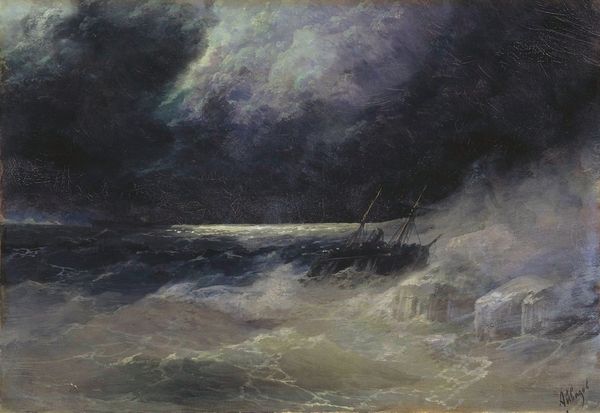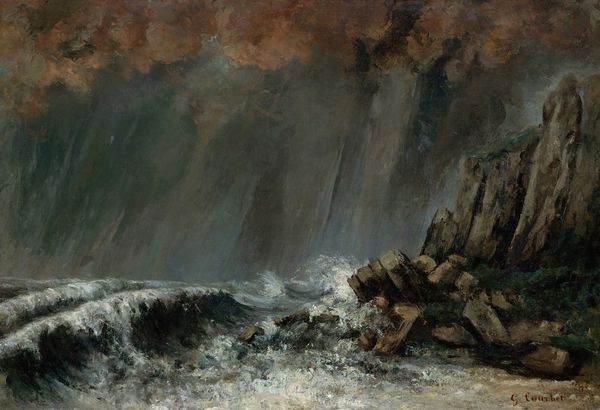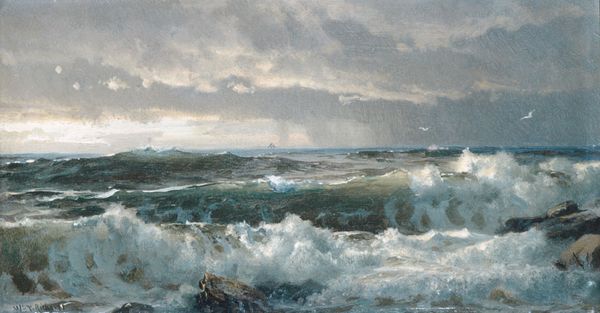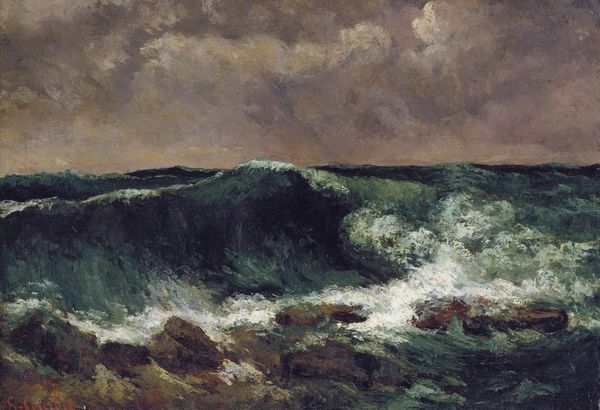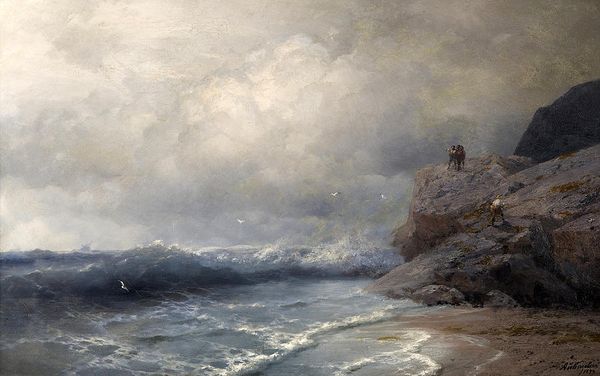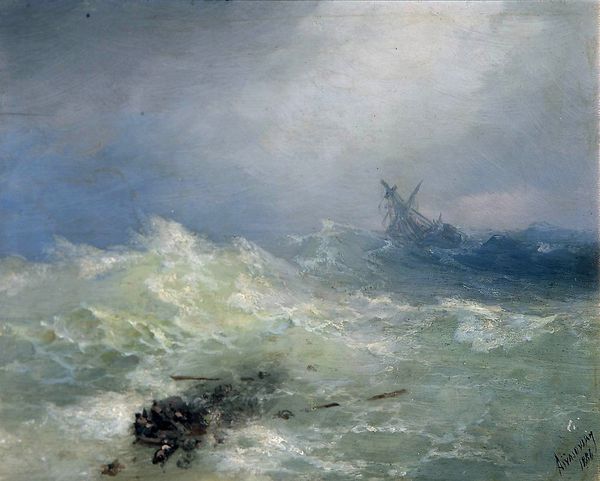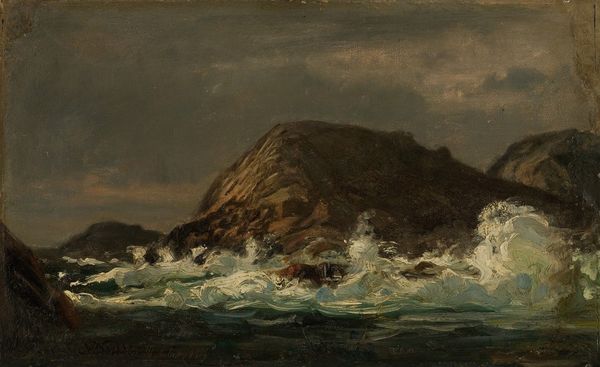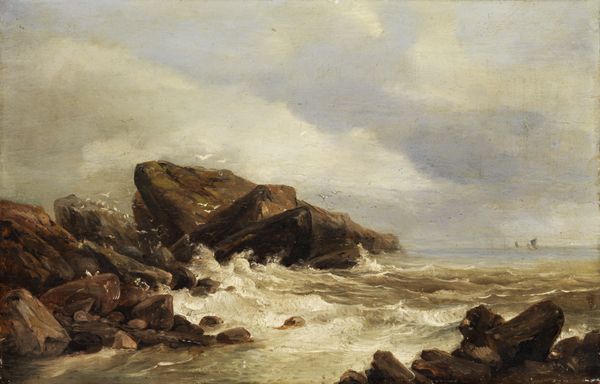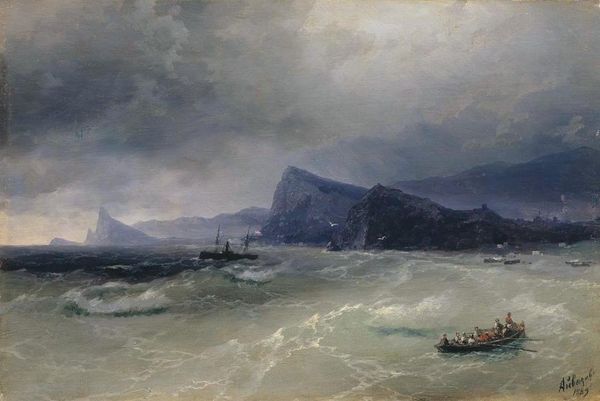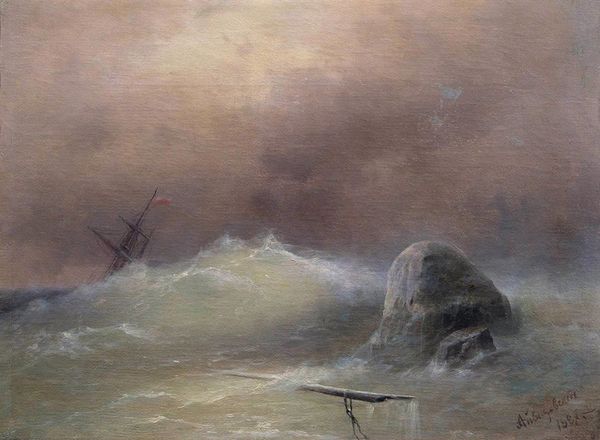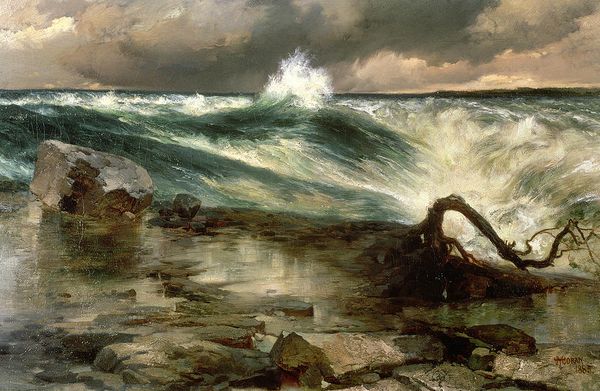
#
impressionistic
#
abstract painting
#
impressionist painting style
#
landscape
#
possibly oil pastel
#
oil painting
#
fluid art
#
neo expressionist
#
underpainting
#
painting painterly
#
watercolor
Copyright: Public Domain: Artvee
Curator: What a dramatic scene! "Sea," painted by Ivan Aivazovsky in 1897. Oil on canvas. I'm immediately struck by the contrast. Editor: It's chaos! Raw, untamed, sublime even. You've got that imposing cliff face on the right and then the ships, battling their way through… It speaks to me of struggle, human persistence against an indifferent nature. The materiality looks almost as turbulent as the subject, which adds to this effect. Curator: Absolutely. Aivazovsky was a master of marine painting. But let's think about the production: Russia was industrializing rapidly, the steamship signaling technological advancements that reshaped naval power, challenging traditional sailing. Editor: The ships offer a contrast: you see this battle between old and new? A sailboat still holding on. Then you notice the factory plumes of the steamer, it shows how much our interactions with the natural world are deeply bound up with technology, industry, pollution, and the struggle of laborers against dangerous elements. Curator: Good point. We see this anxiety reflected, not just in subject matter, but even the composition of the oil paint. Aivazovsky uses thin glazes contrasted with impasto to create depth and movement. Editor: A very theatrical movement; It is almost as if nature and the human relationship to it are rendered performative in this painting. Also, who are those little white dashes going up the rockside: seagulls or an unnatural chemical product of human consumption, washed upon the rocks? Curator: I see your point. Remember the broader context: widespread socio-economic anxieties connected to global industrial growth, imperial Russian nationalism... The sea wasn't just a canvas; it was a resource to be controlled, an arena of power. Aivazovsky had even made commissions for the Russian Navy, who no doubt needed work like this to foster morale in an era of technological transformation. Editor: Exactly, it’s all connected – from pigment production, canvas manufacture, artistic labor, right to imperial designs and industrial growth! I'm walking away with the question about our contemporary relationship with the earth after the Industrial revolution. Curator: I think I am interested in Aivazovsky as an engine of representation in this transitional age of Imperial Russia and rapidly changing naval industry.
Comments
No comments
Be the first to comment and join the conversation on the ultimate creative platform.

